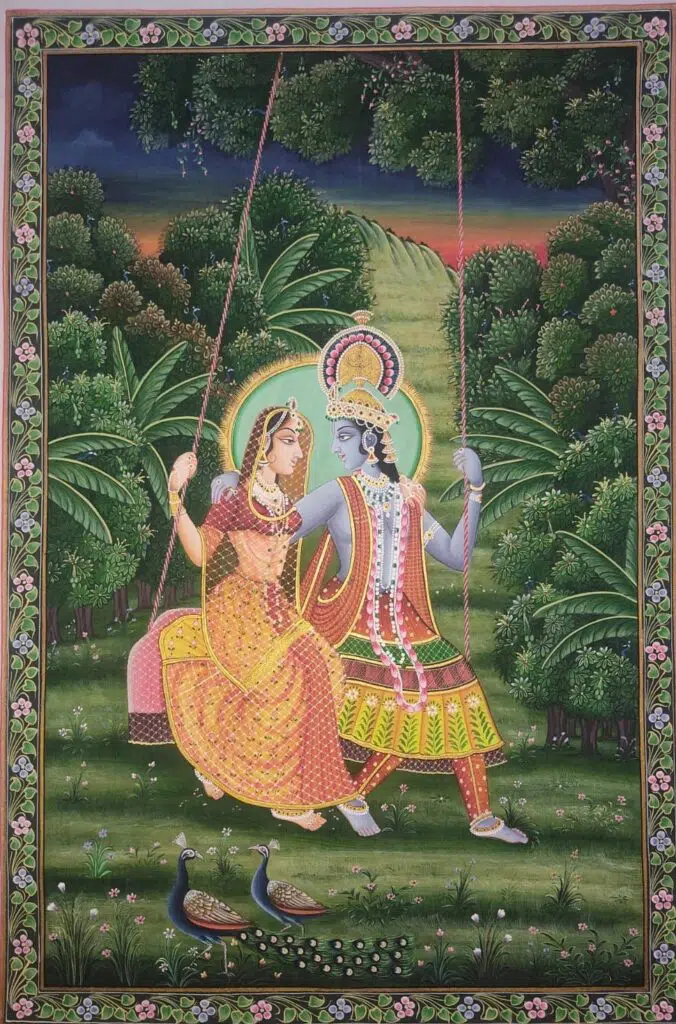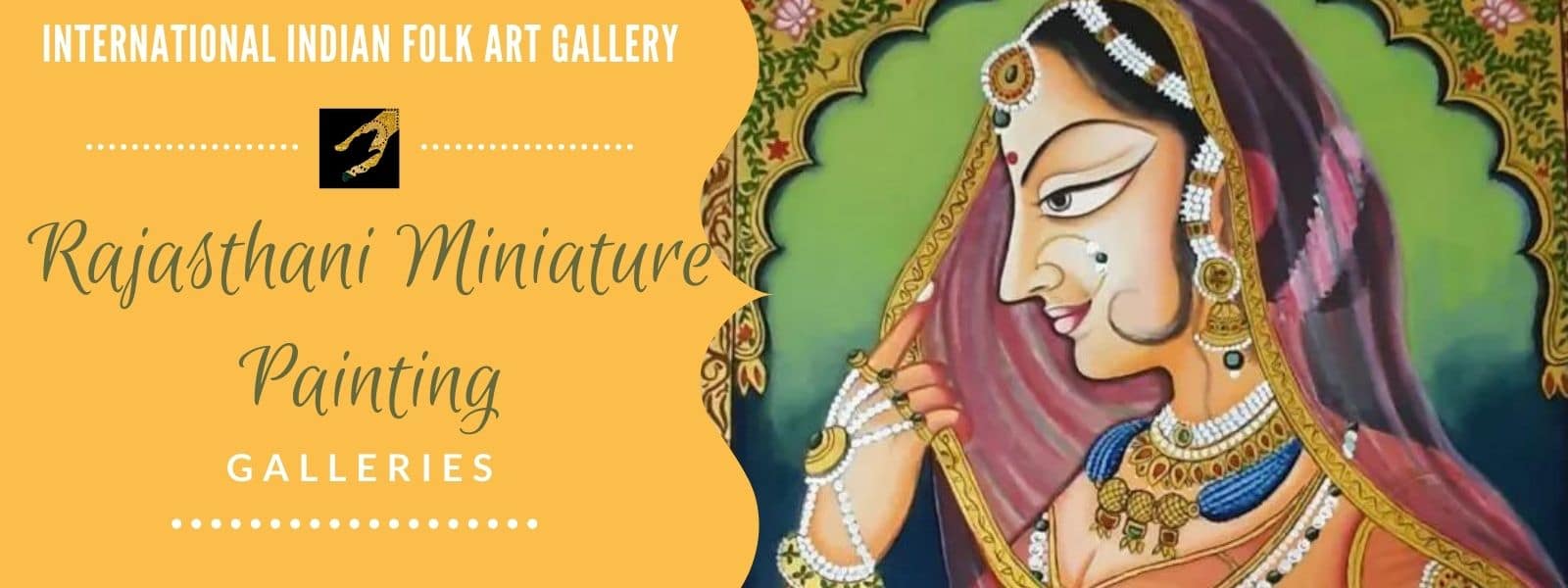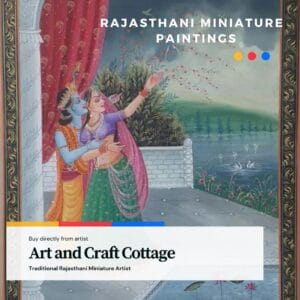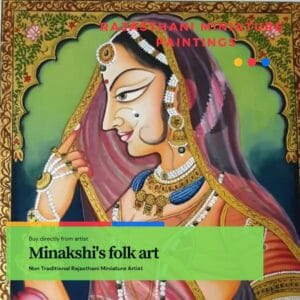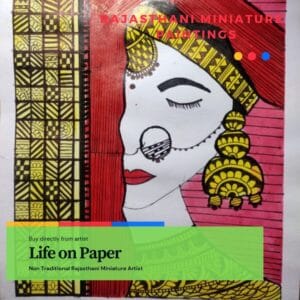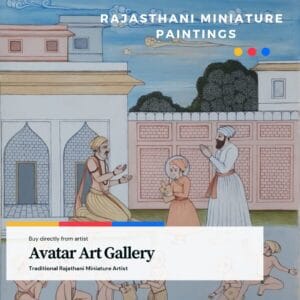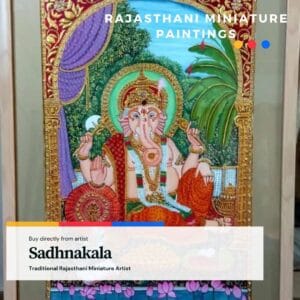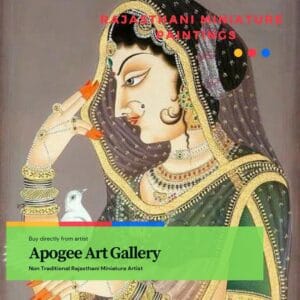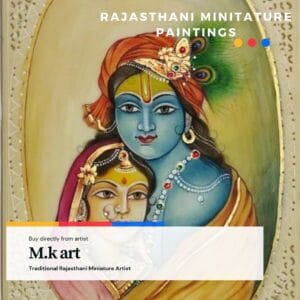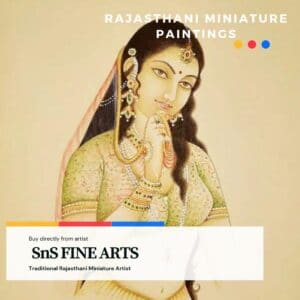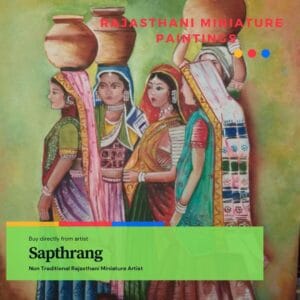Rajasthani Miniature Painting
Rajasthani Miniature Painting
Rajasthan is one of the pioneers of miniature paintings in India. This Indian folk art form evolved here in Marwar-Mewar region as textual illustrations to the Jain text Kalpa-Sutras around the early 15th century. In these Rajasthani Miniature Painting there’s a strong connection to the great art of Ajanta and Gujrat.
This first Indian folk art style began to take form in the Bhagava paintings of Palam (carried out around 1555) and has been widely used in the art styles of Rajasthan. Rajasthani Miniature Painting style incorporates indigenous art forms as well as Western influences.
Rajasthani school of painting was first seen during the end of the 16th century for Mewar. Many various painting styles developed in Rajasthan over time, though the most famous ones are Kota, Bundi, Bikaner, Kishangarh and Mewar. At present-day Jaipur.
Rajasthani Miniature art was influenced by the Mughal style but it had its own personality and perspective. This part of the difference came from Rajasthani artists’ more lyrical approach, as well as their pleasure from pure lines and colors. The other part of the difference lay in the preoccupation with capturing a sense of sacredness.
Rajasthani Miniature Painting mainly used primary colors (such as red, blue, and yellow) along with green, brown, and white. Gold and silver were also used in some paintings.
Two main factors contributed to the development of Rajasthani paintings: first, the patronage of rich Rajputana communities and second, the revival of Vaishnavism and the growth of bhakti cults.
There were a variety of themes in Rajasthani Miniature Paintings, including seasons (Bhahmasa), Ragamala (Rag-Raginis) music, hunting, religious themes from the Ramayana, the Mahabharata, and love scenes of Radha and Krishna.
The bulk of miniature paintings that depicts the initial art style of Rajasthan in its most undiluted form, is reported from Mewar. Bold lines, emotionally charged faces, sharp features, robust figures and basic bright colours are its distinctive features.
There developed at Shahpura, Pratapgarh, Deogarh and Nathdwara sub-centres of Mewar art. Shahpura and Pratapgarh excelled in royal portraits, Deogarh in variety of themes and Nathdwara in representations of Shrinathji. Nathdwara used a variety of mediums but it surpassed all in its large size cloth wall-hangings, known as ‘Pichhawais’.
